Abstract
A new method of treating pleural empyema or pneumonectomy space infection by irrigation was evaluated in 11 patients. The infected cavities were filled with an antibiotic or antiseptic solution for three hours, and allowed to drain for one hour. This cycle was repeated every four hours for seven to 10 days. When cultures of the infected cavity became sterile the irrigation tube was removed and the wound sealed. Using this method, infection was eradicated after an average of 11 days in five of six patients with pleural empyema and in all five patients treated for an infected pneumonectomy space, including one with a bronchopleural fistula. The results of treating 58 similar cases of intrapleural sepsis over a 10-year period by the standard methods of aspiration, open drainage, decortication, or thoracoplasty were compared with the results of irrigation. In general, cyclical irrigation resulted in a shorter hospital stay and a shorter period of wound drainage than other methods.
Full text
PDF
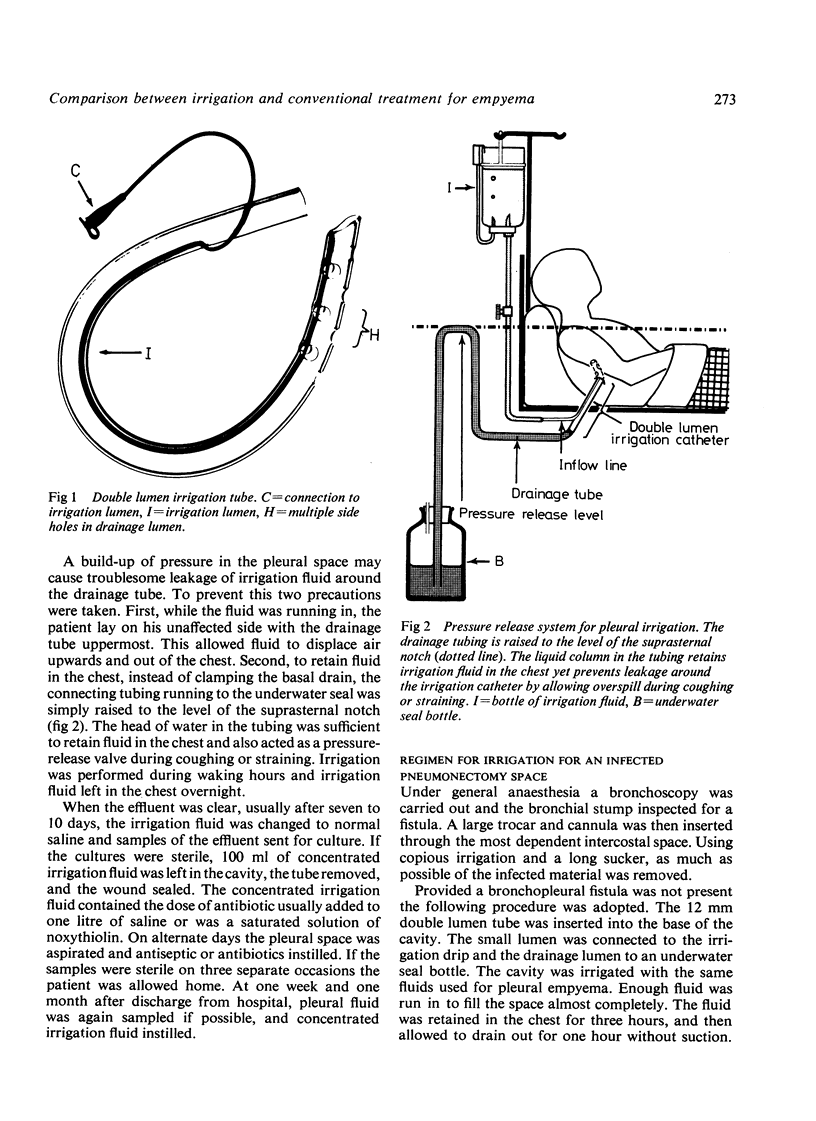
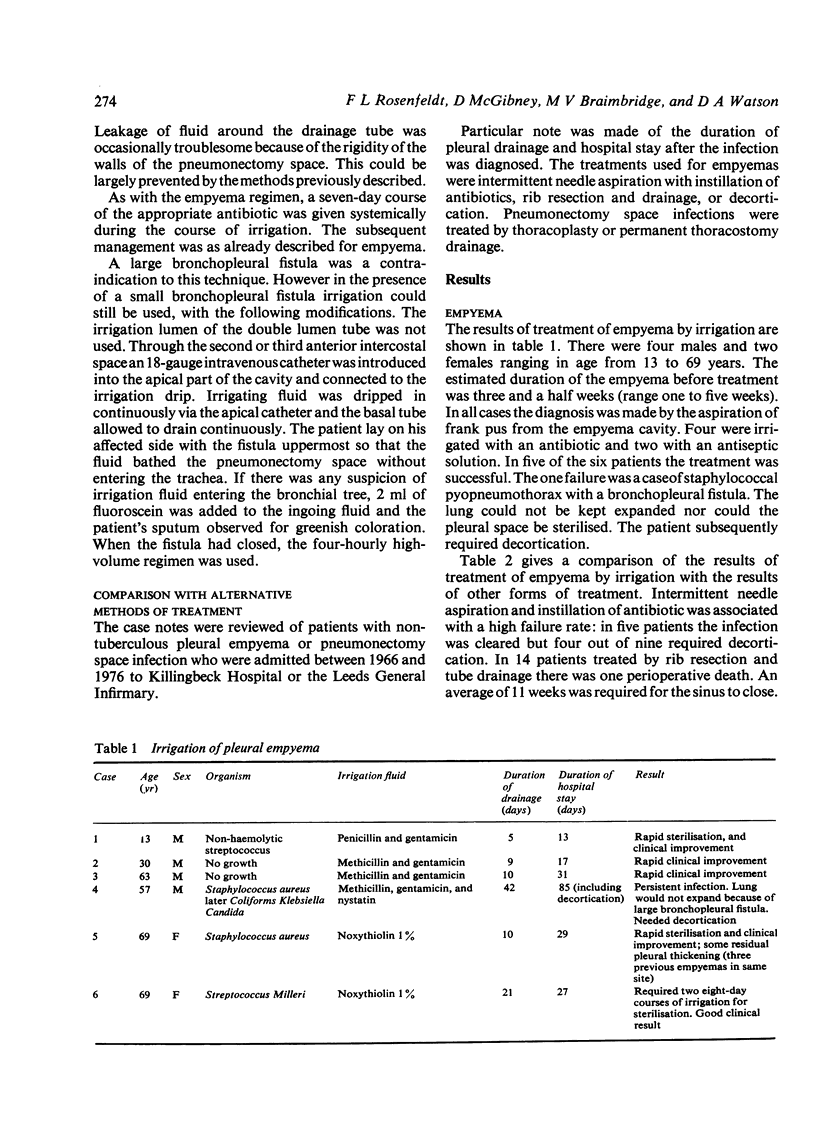
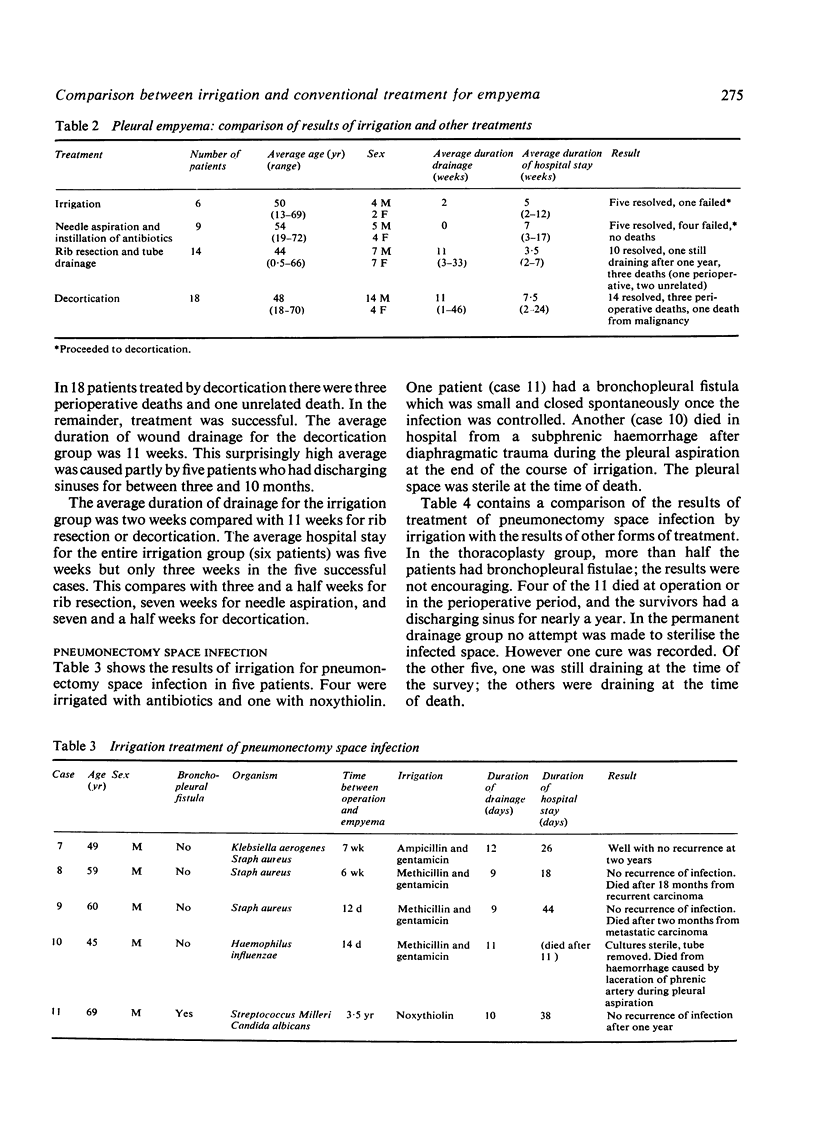
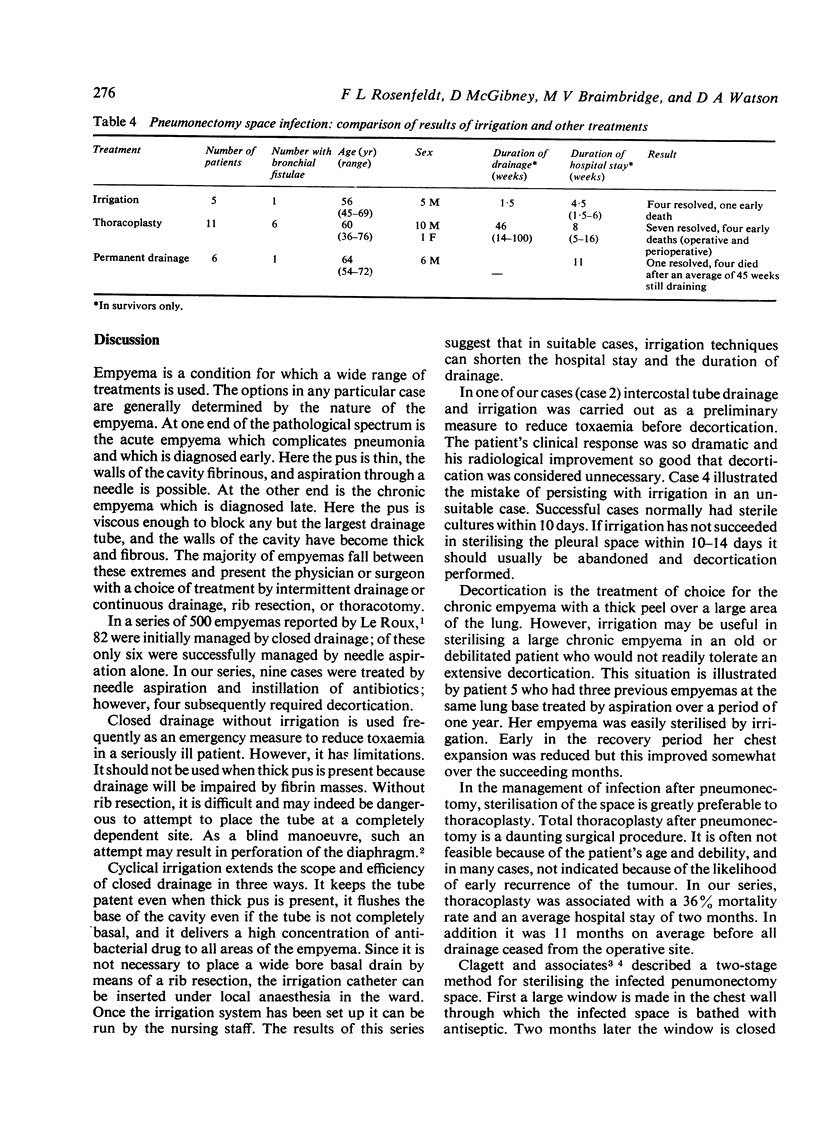
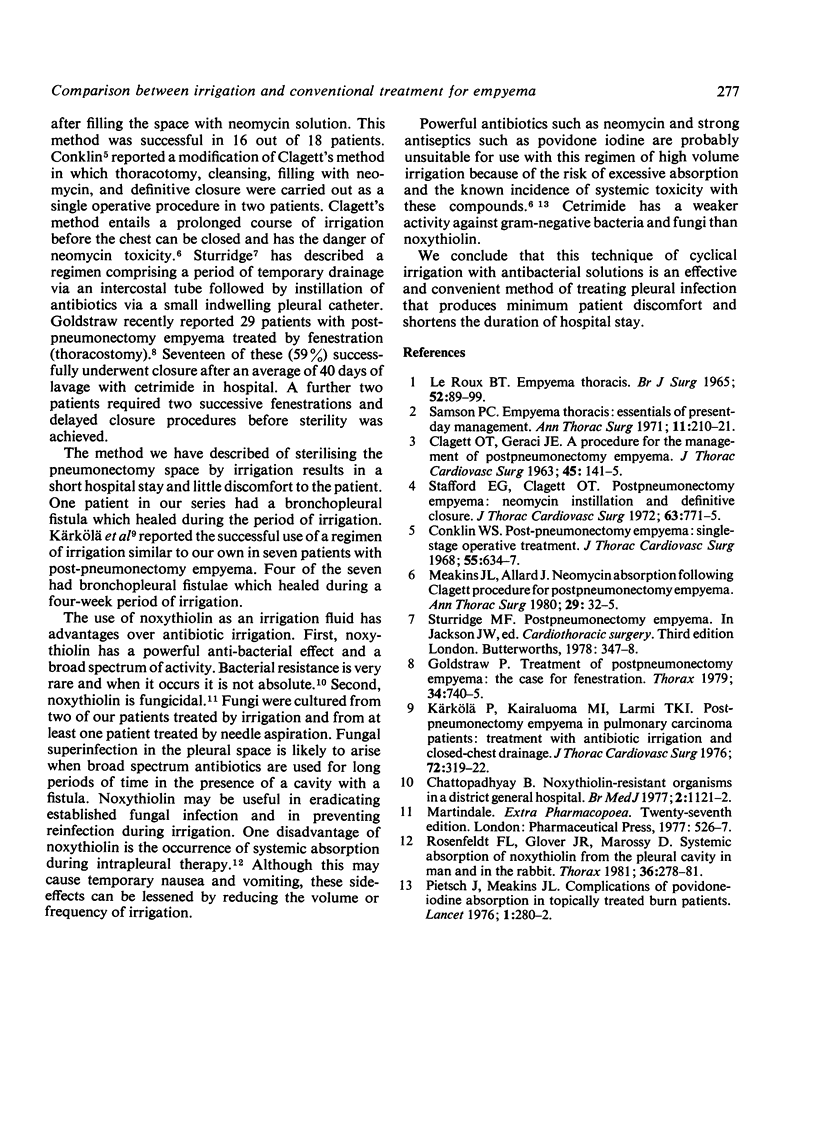
Selected References
These references are in PubMed. This may not be the complete list of references from this article.
- CLAGETT O. T., GERACI J. E. A procedure for the management of postpneumonectomy empyema. J Thorac Cardiovasc Surg. 1963 Feb;45:141–145. [PubMed] [Google Scholar]
- Chattopadhyay B. Noxythiolln-resistant organisms in a district general hospital. Br Med J. 1977 Oct 29;2(6095):1121–1122. doi: 10.1136/bmj.2.6095.1121. [DOI] [PMC free article] [PubMed] [Google Scholar]
- Conklin W. S. Post-pneumonectomy empyema; single-stage operative treatment. J Thorac Cardiovasc Surg. 1968 May;55(5):634–637. [PubMed] [Google Scholar]
- Goldstraw P. Treatment of postpneumonectomy empyema: the case for fenestration. Thorax. 1979 Dec;34(6):740–745. doi: 10.1136/thx.34.6.740. [DOI] [PMC free article] [PubMed] [Google Scholar]
- Kärkölä P., Kairaluoma M. I., Larmi T. K. Postpneumonectomy empyema in pulmonary carcinoma patients. Treatment with antibiotic irrigation and closed-chest drainage. J Thorac Cardiovasc Surg. 1976 Aug;72(2):319–322. [PubMed] [Google Scholar]
- LEROUX B. T. EMPYEMA THORACIS. Br J Surg. 1965 Feb;52:89–99. doi: 10.1002/bjs.1800520205. [DOI] [PubMed] [Google Scholar]
- Meakins J. L., Allard J. Neomycin absorption following Clagett procedure for postpneumonectomy empyema. Ann Thorac Surg. 1980 Jan;29(1):32–35. doi: 10.1016/s0003-4975(10)61624-4. [DOI] [PubMed] [Google Scholar]
- Pietsch J., Meakins J. L. Complications of povidone-iodine absorption in topically treated burn patients. Lancet. 1976 Feb 7;1(7954):280–282. doi: 10.1016/s0140-6736(76)91406-9. [DOI] [PubMed] [Google Scholar]
- Rosenfeldt F. L., Glover J. R., Marossy D. Systemic absorption of noxythiolin from the pleural cavity in man and in the rabbit. Thorax. 1981 Apr;36(4):278–281. doi: 10.1136/thx.36.4.278. [DOI] [PMC free article] [PubMed] [Google Scholar]
- Samson P. C. Empyema thoracis. Essentials of present-day management. Ann Thorac Surg. 1971 Mar;11(3):210–221. doi: 10.1016/s0003-4975(10)65440-9. [DOI] [PubMed] [Google Scholar]
- Stafford E. G., Clagett O. T. Postpneumonectomy emphema. Neomycin instillation and definitive closure. J Thorac Cardiovasc Surg. 1972 May;63(5):771–775. [PubMed] [Google Scholar]


